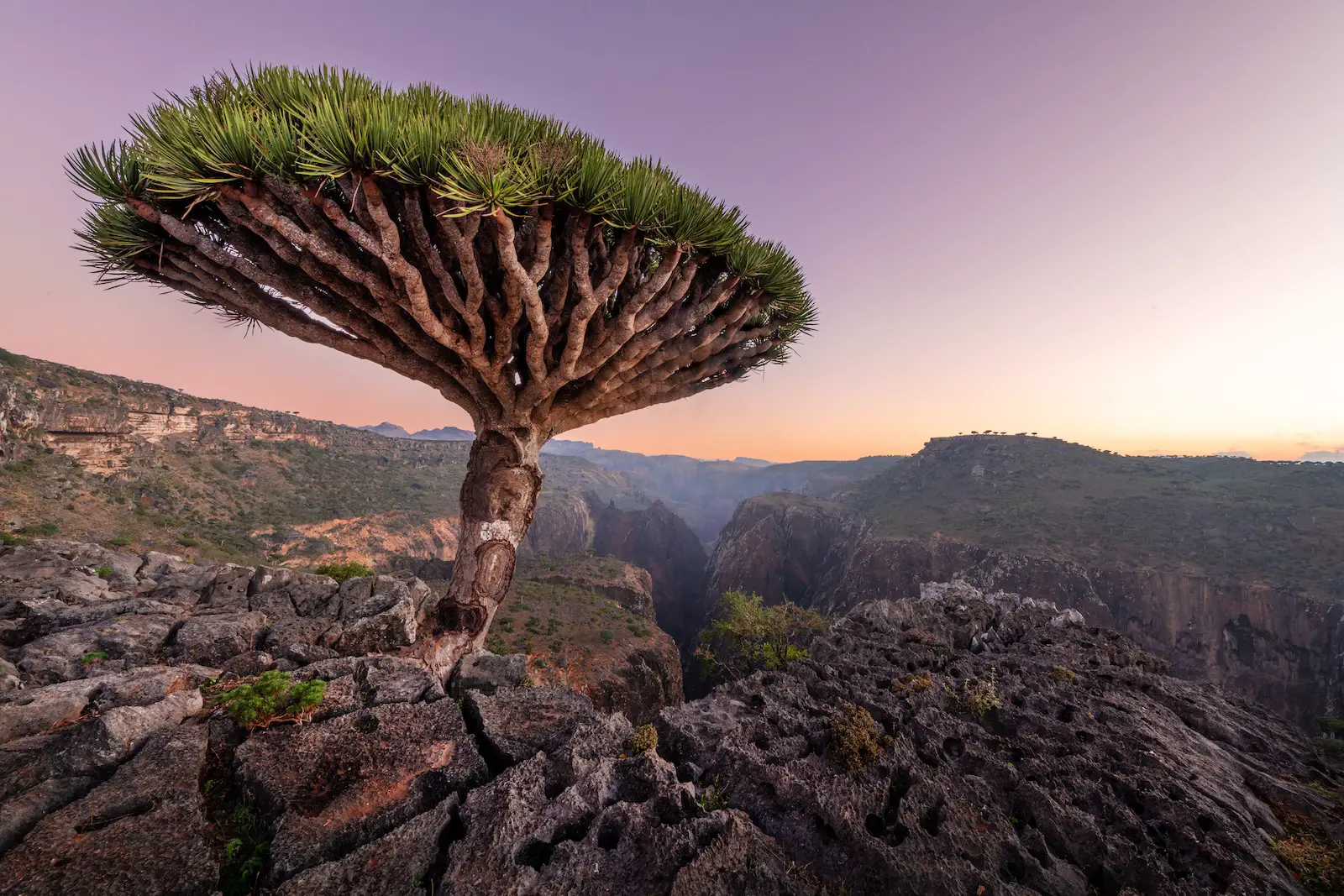The Dragon Tree, a distinctive plant with a mythical name, draws attention with its unique appearance and resilience. Often characterized by narrow, elongated leaves that extend from thick, woody stems, it adds an exotic touch to both indoor and outdoor spaces. The most famous species, Dracaena marginata, has become a popular choice in modern homes and offices.
Originating primarily from the Canary Islands, Cape Verde, Madeira, and western Morocco, Dragon Trees are well-adapted to a variety of conditions. They can grow to impressive heights outdoors, while indoor specimens typically remain more manageable in size. The Dragon Tree’s slow growth, low maintenance requirements, and tolerance to various lighting conditions make it a favorite among plant enthusiasts.
The name “Dragon Tree” comes from the ancient Greek word “drakaina,” meaning a female dragon. According to legend, the red resin, known as “dragon’s blood,” was thought to be the dried blood of dragons. This resin, obtained from some species, has been used historically for various medicinal and artistic purposes.
| Attribute | Details |
|---|---|
| Common Names | Dragon Tree, Red-Margined Dracaena |
| Botanical Name | Dracaena marginata |
| Family | Asparagaceae |
| Plant Type | Perennial, shrub |
| Mature Size | Up to 20 feet outdoors, 4-6 feet indoors |
| Sun Exposure | Partial shade to full sun |
| Soil Type | Well-draining soil mix |
| Hardiness Zones | 10-11 |
| Native Area | Canary Islands, Cape Verde, Madeira, Morocco |
Dragon Tree Care
Dragon Trees are known for their adaptability and ease of care. They can thrive in various light conditions, though they prefer bright, indirect sunlight. The use of well-draining soil is essential, as soggy soil may lead to root rot and other health problems.
Watering the Dragon Tree requires some attention to avoid both overwatering and underwatering. Regular monitoring of soil moisture and adjusting the watering routine according to the season will help maintain a healthy plant. During the growing season, the soil should be kept slightly moist, while during the dormant season, it should be allowed to dry out between waterings.
Light Requirement for Dragon Tree
Dragon Trees grow best in bright, indirect sunlight but can adapt to partial shade. Prolonged exposure to direct sunlight may cause leaf burn, while insufficient light may lead to dull, sparse foliage.
Soil Requirements for Dragon Tree
Well-draining soil, rich in organic matter, is essential for healthy Dragon Tree growth. A mix of potting soil, sand, and peat or perlite will create the right environment for the roots to thrive.
Water Requirements for Dragon Tree
Watering should be moderate, allowing the soil to dry slightly between applications. Overwatering can lead to root rot, while insufficient watering may cause the leaves to become dry and crispy.
Temperature and Humidity
Dragon Trees prefer temperatures ranging from 65°F to 75°F (18°C to 24°C) and moderate humidity levels. They can tolerate lower humidity, but misting or a humidifier can be beneficial in particularly dry indoor environments.
Fertilizer
Fertilizing with a balanced liquid fertilizer every month during the growing season (spring to early autumn) will support healthy growth.
Pruning Dragon Tree
Regular pruning is not necessary but can be performed to control the plant’s shape or size. Removing dead or yellowing leaves keeps the plant looking tidy.
Propagating Dragon Tree
Propagation can be done through stem cuttings or air layering. Both methods are relatively easy and can create new plants from existing ones.
How To Grow Dragon Tree From Seed
Growing Dragon Tree from seed is a longer process and less commonly practiced. Seeds should be sown in well-draining soil and kept in a warm, humid environment until germination.
Common Pests & Plant Diseases
Spider Mites
Monitor for spider mites and treat with insecticidal soap if detected.
Scale Insects
Scale insects can be controlled with neem oil or horticultural oil.
Common Problems With Dragon Tree
Brown Leaf Tips
Often a result of low humidity or over-fertilizing.
Yellow Leaves
Usually a sign of overwatering or poor drainage.
Pro Tips
- Keep away from drafts or sudden temperature changes.
- Rotate the plant regularly to ensure even growth.
- Consider repotting every 2-3 years as the plant grows.
- Trim off any discolored leaves to maintain the plant’s appearance.
- Select the appropriate pot size, as too large a pot can lead to overwatering issues.




